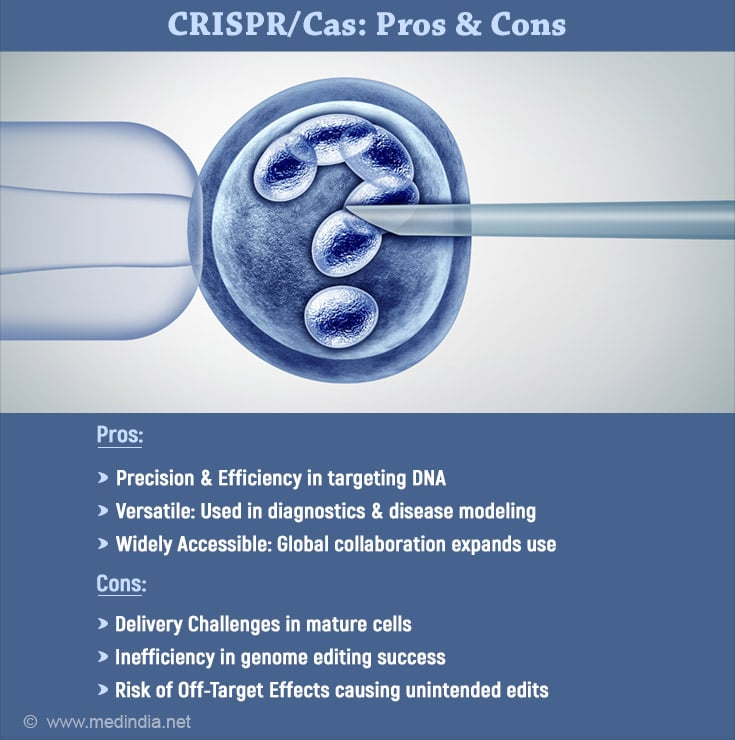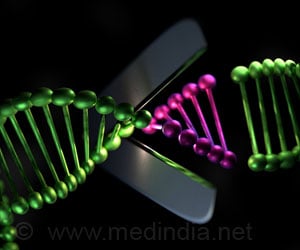- Questions and Answers about CRISPR - (https://www.broadinstitute.org/what-broad/areas-focus/project-spotlight/questions-and-answers-about-crispr)
About
CRISPR (Clustered Regularly Interspaced Short Palindromic Repeats) is one of the most promising tools of contemporary genetic engineering. Previously identified as a defense mechanism against bacteriophages in bacteria, CRISPR has emerged as a versatile molecular editing technology in the life science, specialty that allows the precise modification of genes of living organisms and may be harnessed to cure a broad range of hereditary diseases.
Origin of CRISPR
Francisco Mojica, a scientist of the University of Alicante, has initiated the evolution of the story behind CRISPR as a protection system of bacterial genomes. He postulated that CRISPR sequences are used as a storage for information about viruses and as a tool for fighting them. His work related to the application of the CRISPR/Cas system was used by other scientists showed that it can detect and disarm viruses.
In 2013, the technology reached another massive advancement when scientists of the Zhang lab expanded CRISPR into genome editing in human and mouse cells. This marked the initial platform for the application of CRISPR for the targeted genome editing in living organism which paved way to revolutionize the biomedical science area.
How Does CRISPR Gene Editing Work?
CRISPR gene editing operates by targeting specific DNA sequences in the genome and using a protein called Cas9 to cut the DNA at these points. The process is guided by RNA sequences, which direct Cas9 to the exact location where the edit is needed. Once the DNA is cut, two outcomes are possible: the DNA can be disabled, or new genetic material can be inserted.
Did You Know?
CRISPR has the potential to correct genetic mutations, paving the way for groundbreaking treatments! #medindia #crispr #geneediting
What distinguishes CRISPR from other gene-editing tools is its simplicity and precision. By creating custom guide RNA sequences, scientists can target virtually any gene, making the system highly adaptable. This breakthrough has enabled researchers to study gene functions and develop treatments for various genetic diseases.
Mechanism of CRISPR Gene Editing
CRISPR is an effective, precise method in molecular biology and genetics. The strategy involves the development of an appropriate guide RNA that corresponds with the target double stranded DNA sequence. This guide RNA leads the Cas9 protein to the part of the genome which is to be incised at a particular genomic site.
This is will happen once Cas9 gets to the intended target DNA, where it cuts the local DNA to form a double-strand break. Its own body repairing system kicks in after that to try and heal the damage that has been done for various reasons. This repair can result in one of two outcomes:
- Replication of a new DNA when the parent or the template is made available.
- Sometimes an error may initiate by the repair process which leads to gene disruption.
This technology has significantly transformed biomedical research due its ability to make very selective genetic manipulations. For instance, scientists apply CRISPR for manipulation of the genomes of a certain type of animal, in particular mouse, that can help define the roles of genes and movements of diseases(1✔ ✔Trusted Source
Questions and Answers about CRISPR
Go to source).
Applications of CRISPR Gene Editing
CRISPR technology is currently utilizable in a number of disciplines especially in medicine and agriculture. In clinical application, the use of CRISPR to correct mutation causing genetic diseases has great potential in human medicine. For example when mutations cause severe consequences such as in cystic fibrosis CRISPR could in theory be used to put in functioning sequences which would fix the defective gene.
Current human clinical trials are exploring innovative applications of CRISPR, including:
- CAR-T Cancer Therapy: T-cell receptors are being edited to enable them to identify cancer cells and also target them for destruction in patients with specific types of cancer.
- Retinal Cell Editing: Scientists examined whether CRISPR works to correct retinal cells in the case of Leber’s congenital amaurosis, which is an inherited blindness.
Other than hereditary treatments, this technique is also lending precision to farming by helping alter some plants. This technology can also enable the breeding of plants with three or more desirable characteristics including disease and pest resistance, improved nutrient quality, and resilience to climatic change.
CRISPR Gene Editing: Pros and Cons
CRISPR/Cas technology as it relates to gene editing cannot be rivaled when it comes to precision and flexibility of use; however, like any powerful instrument it has its benefits as well as drawbacks.
Pros:
- Precision and Efficiency: CRISPR is a revolutionary tool in gene editing because it helps the researchers to modify particular gene sequence in a specific manner with great precision. This has changed areas of science, including biomedical science, making it easier to develop animal models to investigate genetic disorders.
- Versatility: That said, besides the gene editing, CRISPR is now being harnessed for other purposes. For example, it has been developed as a point of care screening tool in detecting diseases such as cancer and other diseases such as infectious diseases. Scientists are also employing CRISPR to study hard-to-model diseases like mental illnesses and cancer using animals for their study.
- Wide Accessibility: CRISPR has largely benefited from the international co-operation in its application. Feng Zhang and his team at the Broad Institute targets thousands of CRISPR components to worldwide academic laboratories, training many researchers and broadening its applications in a range of fields.

Cons:
- Delivery Challenges: The major drawback of CRISPR technology together with the CRISPR/Cas material is really the delivery of the material to a vast number of mature cells, which is very relevant for many programs. However, viral vectors are not always advantageous, and strong exogenous delivery systems are still being sought.
- Inefficiency: Not all such cells will be impacted by the CRISPR/Cas components in a manner that will enable genome editing. These inefficiencies indicate that the optimization of the system for a particular research application is highly dependent, time-consuming as well as costly.
- Off-Target Effects: Even though CRISPR is very precise, it isn’t flawless. At the same time, sometimes the CRISPR enzyme cleaves ‘off-target’, affecting unwanted parts of the genome which, if in a clinic, can have severe consequences.
However, owing to flexibility, faster and universal application CRISPR has become a key resource for scientific as well as medical application. Currently, there are ongoing improvements by scientists on the more useful ways to apply CRISPR and its promise in eradicating horrible diseases that caused by defective genes and in enhancing medical advancement is immense.
CRISPR-Cas9 vs. CRISPR-Cpf1
While CRISPR-Cas9 may be the most ubiquitous system at the moment, systems like CRISPR-Cpf1 have other functions. For example, Cpf1 is somewhat less complex because it involves a RNA molecule only and it cuts the DNA more accurately providing clean edits. This flexibility expand the possible usage of CRISPR for treating various disease, ranging from genetic disorders, to infectious diseases.
Ethical Considerations of CRISPR
CRISPR can also be used in the DNA of germ cells, or zygotes, which can then pass it on to their offspring – known as germline editing. Somatic modification, on the other hand, applies a change exclusive to the individual, germline modification as a possibility as well. Some worry simple techniques could be employed for disease avoidance as well as for designer babies thus raising serious ethical questions. There are many scientists like those at JAX who currently believe that there should not be human germline editing until further understanding of its consequences is developed.
Beyond Genome Editing
CRISPR’s capability is not about the genome editing only, it has broader applications. It has also been developed to be used in rapid diagnostic test where it assists in identifying diseases such as cancer as well as infection diseases. Furthermore, CRISPR has driven the generation of disease models in animal more rapidly and has brought new knowledge in certain diseases including mental diseases and cancer, among others.
This is because many researchers around the world have embraced the CRISPR technology. Since then, feng Zhang and his team from Broad Institute have deposited over 40000 CRISPR components for the members of the international scientific community, as they have trained over thousands of labs in the installation. This widespread cooperation is revolutionizing the pathogenesis of research tasks in genetics.
Future of CRISPR Gene Editing
Whether it be in the discovery of new therapeutic targets for genetic diseases, or in the generation of better models of human diseases, CRISPR is acting like a catalyst recharging the bio-medicine industry at a rate never seen before.
From changing the face of genetics by offering accurate gene therapy to providing innovative diagnostic platforms, the future of human health looks very bright with the help of CRISPR technology.









